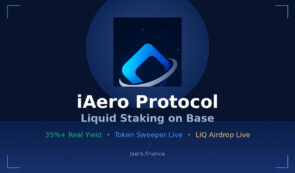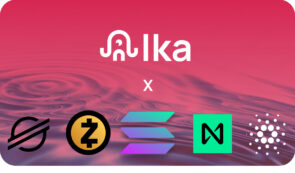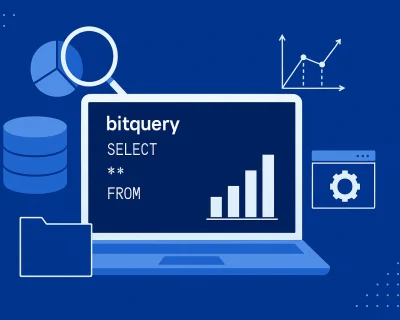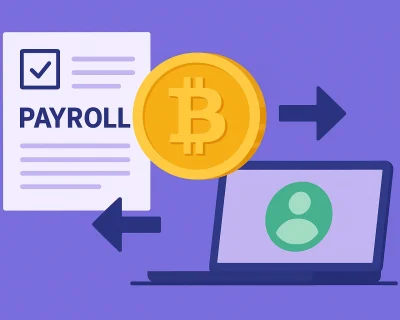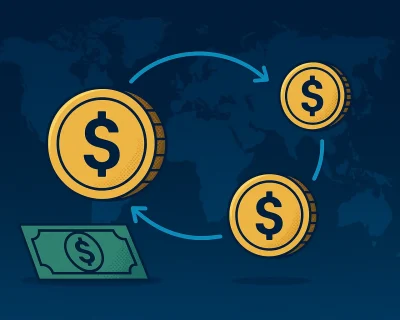How to Create and Deploy Smart Contracts on Polkadot: Everything You Need to Know
Smart contracts have taken the blockchain world by storm, cutting out the middleman and automating rule execution like a boss, and one platform that has revolutionized these contracts is Ethereum. However, even if Ethereum has been ruling the smart contract scene, Polkadot brings a fresh game to the table, offering scalability, interoperability, and top-notch security.
In this article, we’ll take you on an exhilarating ride, revealing the secrets of creating and deploying smart contracts on the Polkadot network.
We’ll unravel the power of parachains in the Polkadot ecosystem and introduce you to the Substrate framework, the ultimate tool for building smart contracts.
What is Polkadot?
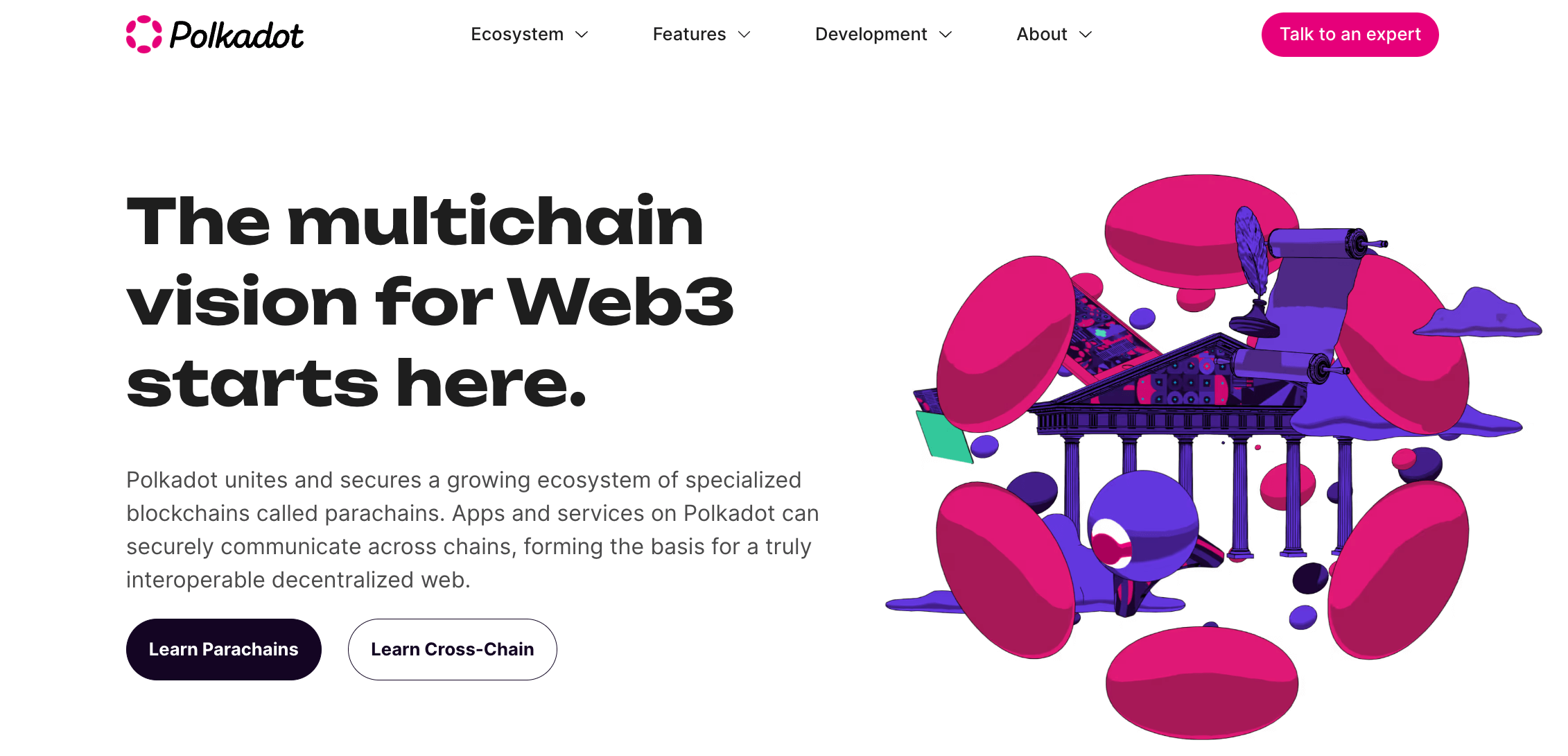
Polkadot is a collaborative blockchain project that aims to improve blockchain interoperability and scalability, striving to rival or surpass Ethereum. It stands out as a highly innovative initiative in the crypto space, attracting significant attention from investors, developers, and users.
The project was founded by Dr. Gavin Wood, Robert Habermeier, and Peter Czaban under the Web3 Foundation. While Habermeier and Czaban may not be as well-known, Wood’s reputation in the crypto industry is substantial due to his involvement as an Ethereum co-founder, Parity Technologies’ founder, and the Solidity smart contract coding language creator.
Polkadot envisions building an ecosystem where projects can leverage its security instead of starting from scratch, boosting blockchain technology’s interoperability, scalability, and speed. This network connects blockchains through a system comprising a relay chain, parachains (shards), parathreads, and bridges.

The main relay chain ensures consensus across the platform and facilitates cross-chain transactions.
Parachains, on the other hand, enable parallel transactions and horizontal scalability. Within parachains, state machines facilitate the creation of dedicated blockchains with globally coherent data structures verified by relay chain validators.
The maintenance of parachains is overseen by network maintainers known as collators. They maintain full nodes, store vital parachain information, and generate block candidates for verification and inclusion in the shared state of Polkadot by relay chain validators.
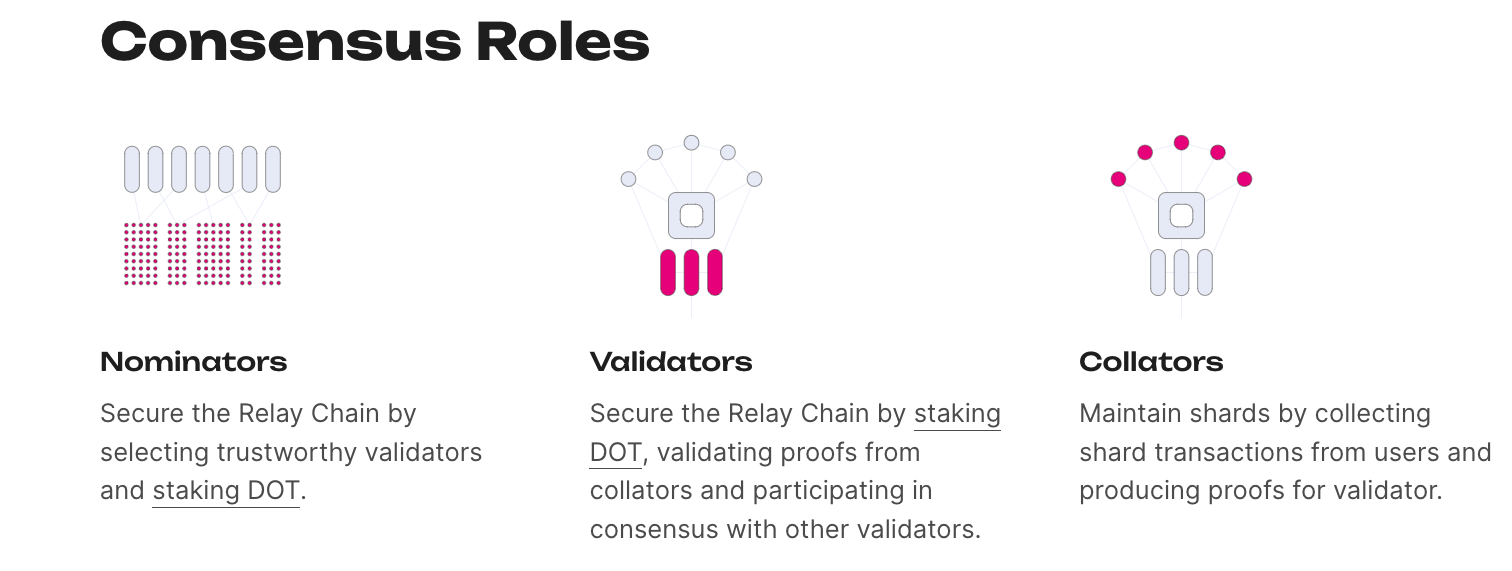
Parathreads, similar to parachains, operate on a pay-as-you-go model rather than a full slot purchase. Some parachain slots are allocated to the parathread pool, enabling the block parathread fee auction winner to place their block candidate in slots without an associated parachain.
Bridges, in turn, act as code adaptors to establish consensus with external chains, enabling compatibility between the Polkadot ecosystem and blockchains like Bitcoin, Ethereum, or Tezos.
DOT has served as a governance facilitator throughout its existence, incentivized the Nominate-Proof-of-Stake consensus protocol, and facilitated fees and payments. Moving forward, DOT will play three crucial roles in the Polkadot ecosystem: governing the network, operating the network, and bonding to create parachains.
What are Polkadot Smart Contracts?
Polkadot Smart Contracts are self-executing contracts with predefined rules and conditions that run on the Polkadot network.
These contracts are natively written in the Rust programming language using the Substrate framework, which is made for building parachains and custom blockchains within the Polkadot ecosystem.
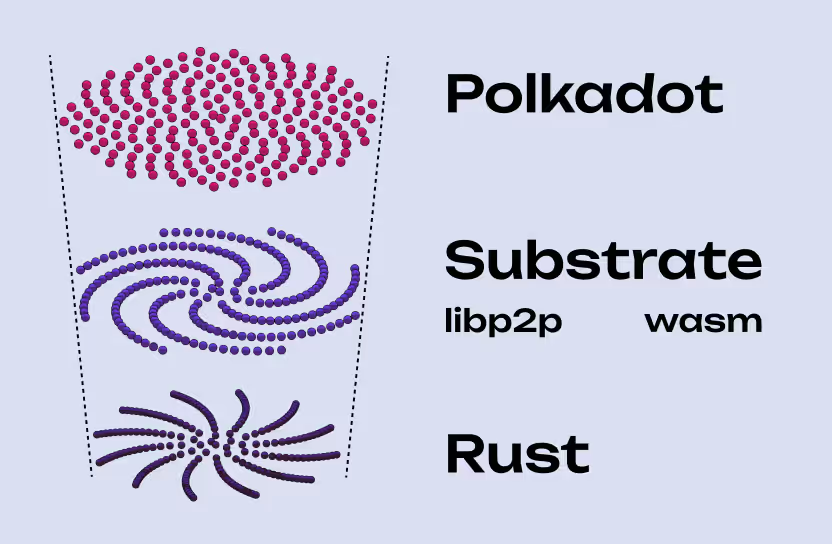
Polkadot smart contracts enable developers to create decentralized applications (dApps) and execute programmable logic on the network. They facilitate various functionalities, such as token transfers, decentralized finance (DeFi) protocols, governance mechanisms, etc.
By leveraging Polkadot smart contracts, developers can bring their innovative ideas to life and interact with the broader Polkadot ecosystem while benefiting from its interoperability and shared security model.
You need to know that the Polkadot relay chain, being a layer 0 blockchain, does not natively support smart contracts. However, the Polkadot ecosystem offers layer 1 blockchains called parachains that are purposefully designed and equipped to provide smart contract functionality.
What Advantages Does Polkadot Offer for Smart Contract Development?
Polkadot, as a cutting-edge blockchain protocol, offers unparalleled interoperability between diverse blockchains. When developing a decentralized application (dApp) on Polkadot’s parachain, it inherently becomes interoperable with other parachains in the network. These advanced layer-1 blockchains foster an ecosystem of independent blockchains that can communicate seamlessly, revolutionizing the traditional isolated blockchain approach.
Here are some additional advantages that Polkadot brings:
- Leveraging the Power of Polkadot – Smart contract developers can harness the underlying advantages of the Polkadot relay chain, including shared security, governance, consensus mechanisms, and scalability.
- Flexibility and Optimization – With high flexibility and the ability to develop the Parachain itself, Polkadot eliminates the challenges of optimizing various use cases. This ensures fully optimized and highly secure services with minimal downtime.
- Seamless Upgrades – Developers on Polkadot can easily perform periodic upgrades on smart contracts, keeping them up to date with the latest technologies and ensuring their continuous functionality.
- Enhanced Security – Smart contracts built for Parachains receive robust security from the underlying blockchain. There is no need to establish a network of miners or gather validators from scratch, as Polkadot provides a trusted security framework.
Tools and Technology Stack Needed to Create a Smart Contract on Polkadot
Polkadot provides various tools, SDKs, PDKs, testnets, and blockchain frameworks to facilitate the development of cutting-edge Web3 solutions and dApps. These tools and resources are regularly updated to enhance the relevance and power of the Polkadot ecosystem. Here is a curated list of essential tools and resources commonly used for development purposes:
Polkadot Smart Contracts Tools
- Substrate – The blockchain development platform written in Rust. The Rust version of the Polkadot Host was built with Substrate.
- Substrate Docs – A comprehensive documentation and tutorial resource that guides you through building a blockchain using Substrate.
- Substrate VSCode Plugin – A plugin for the Visual Studio Code editor that provides enhanced development features and tooling specifically for Substrate projects.
- Substrate Debug Kit – A collection of debug tools and libraries designed for Substrate chains. It includes utilities for offline NPoS election calculations, disk usage monitoring, testing templates against chain state, and other helpful features specific to Substrate pallets.
- Diener – A tool that simplifies the process of changing Polkadot or Substrate dependency versions, making it easier to manage and update your project’s dependencies.
- Polkadot Launch – A tool that facilitates the easy launch of custom local versions of Polkadot with parachain functionality enabled. It allows for the experimentation and testing of Polkadot network configurations.
- Halva – A local development environment for Substrate inspired by Truffle. Halva provides a convenient setup for developing and testing Substrate-based projects.
- Fork-off Substrate – This tool enables you to create a local version of an existing chain by copying its state. It allows you to experiment and make changes to the copied chain without affecting the original network.
- SRtool – A tool used for verifying runtime versions against on-chain proposal hashes. It helps ensure compatibility and consistency when upgrading Substrate runtimes.
- Sub-bench – A benchmarking tool for Substrate that allows you to test the performance of your node by flooding it with transactions. It helps evaluate the scalability and efficiency of your Substrate-based blockchain.
- Substrate-devhub-utils – A set of JavaScript utilities that aim to simplify development with Substrate. These utilities provide helpful functions and tools to streamline Substrate-related tasks.
Polkadot Smart Contract Language or Programming Languages
- Rust;
- Ink!;
- Go;
- C++;
- Python;
- Java;
- Other Languages via Bridges.
How to Create and Deploy a Smart Contract on Polkadot
The relay chain in Polkadot serves as a seamless coordinator for parachains, but it doesn’t have built-in support for smart contracts. However, you can leverage the parachain as a blockchain ecosystem to develop your own blockchain or decentralized application (dApp) and utilize the relay chain to connect with the main Polkadot network.
Polkadot utilizes Substrate as its blockchain software development kit (SDK), which includes essential components like network logic, transaction queue, web assembly interpreter, and implementations such as token balances. Currently, Substrate provides two approaches for smart contract development:
- Frontier EVM Contracts – Frontier offers a comprehensive toolset that enables a Substrate-based chain to run Ethereum Virtual Machine (EVM) contracts directly, utilizing a common RPC/API interface.
- Substrate Contracts – Substrate is a blockchain framework designed to support a future of multiple interconnected chains. Developers in the Polkadot ecosystem can leverage Substrate to swiftly build blockchain use cases and optimize them for improved usability.
Easiest Way to Create and Deploy a Smart Contract on Polkadot
To create a smart contract on Polkadot, you can use the Ink! programming language, which is specifically designed for developing smart contracts on the Polkadot ecosystem. Ink! is a Rust-based high-level language that allows you to write smart contracts that can be deployed on the Polkadot network.
Here’s a step-by-step guide on how to create a smart contract on Polkadot using Ink!:
- Set Up Your Development Environment
- Install Rust – Visit the official Rust website and follow the instructions to install Rust on your machine.
- Install the Polkadot Development Tools
2. Create a New Project
3. Add Dependencies
4. Write Your Smart Contract Code:
5. Build and Test Your Contract
6. Deploy Your Contract
This is a basic outline of the process of creating a smart contract on Polkadot using Ink! and deploying it to the network. For a more in-depth explanation of how to create and deploy a smart contract on Polkadot, you can follow these technical steps, with code presentation and step-by-step explanations by the LeewayHertz team.
SIDENOTE. This process requires proficiency in IT and programming skills.
FAQ
Does Polkadot Have Smart Contracts?
Yes, Polkadot has smart contracts. However, you must remember that the Polkadot relay chain is a layer 0 blockchain, so it does not possess native support for smart contracts. However, within the Polkadot ecosystem, the layer 1 blockchains known as parachains are specifically designed and equipped to provide smart contract functionality.
Rust is the programming language primarily used for developing smart contracts on the Polkadot network. Rust is known for its focus on safety, performance, and concurrency, making it suitable for building secure and efficient smart contracts within the Polkadot ecosystem.
Can You Use Solidity on Polkadot?
Solidity is not natively supported on the Polkadot network. Solidity is the programming language primarily used for developing smart contracts on the Ethereum blockchain. However, it’s worth noting that projects or initiatives may explore ways to enable Solidity compatibility or provide Solidity-like functionality on Polkadot. For instance, Moonbeam is a project that facilitates Solidity smart contracts on Polkadot.
What are the Parachains of Polkadot?
Parachains in Polkadot are independent blockchains that run in parallel to the Polkadot relay chain, providing scalability and specialization within the network. They enable different projects and applications to have their dedicated blockchain, benefiting from reduced development costs, interoperability with other parachains and external blockchains, and enhanced security through shared security with the Relay Chain. Parachains can be tailored to specific use cases, governed by their own consensus mechanisms, and connected through the Polkadot network, allowing for asset and data exchange.
Conclusion
Smart contracts have become a force to be reckoned with in the blockchain industry, transforming how we execute rules and eliminating the need for intermediaries. While Ethereum has undoubtedly dominated the smart contract scene, Polkadot emerges as a game-changer, offering a fresh perspective with its scalability, interoperability, and top-notch security.
By harnessing the innovative capabilities of Polkadot, you now have the tools and knowledge to step into a new era of smart contract development.
So, go forth and let your creativity run wild.



